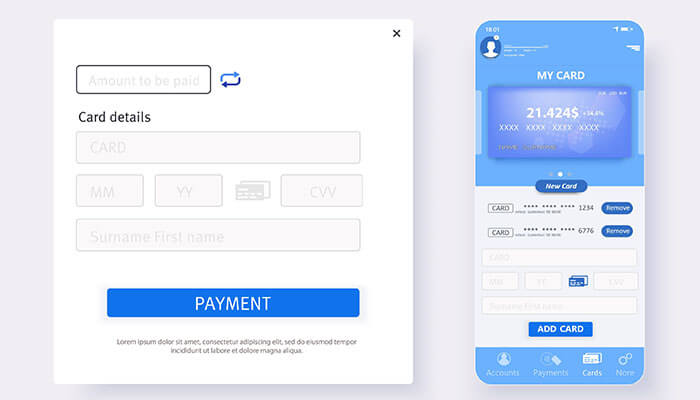An embedded payment system is a tool that allows users to make payments directly from their websites. They provide a convenient and secure way for customers to pay for goods or services online without being redirected to an external payment processor or third-party website. The merchant embeds a third-party payment processor into their website so customers can complete the transaction without leaving the page.
Embedded payment systems are becoming increasingly popular with businesses due to their security, convenience, and efficiency. It is a standard part of eCommerce websites today as it ensures a seamless checkout process for users and helps to reduce the risk of payment fraud. Here are some of the main benefits of implementing an embedded payment system:
1. Safe Payments
Cases of sensitive data breaches involving customers are rare with embedded payments, as all information is securely stored within the website. These systems utilize secure application programming interfaces to transmit data, ensuring customer information stays safe from hackers and third parties.
Additionally, only one application is required to add products to the cart and checkout payment, so there’s no need for copy-pasting or typing payment details on another site. It reduces the chances of customers mistakenly entering their personal information, decreasing payment fraud and errors. It also minimizes instances of entering incorrect payment details.
2. A better customer experience
One of the biggest challenges facing businesses and customers is the need for a seamless checkout process. It often leads to several abandoned carts, as customers are frustrated by the need to navigate to and from your website and different payment gateways. This results in a poor experience on your website and could negatively impact your overall business performance.
An embedded payment system streamlines transactions on your website, resulting in an enhanced overall customer experience. All they need to do is click a button or a link, and the payment is automatically processed without leaving the page. It helps reduce cart abandonment rates and encourages customers to complete their purchases.
3. Faster Checkouts
The payment process should be very convenient and seamless for customers, and embedded payment systems can help to achieve this. Users can stay on the page since all information is stored on the merchant’s website. This means checkout time is significantly reduced, as customers don’t have to fill out details on a third-party website or wait for pages to load. As a result, shoppers can quickly and easily complete the checkout process.
4. Increased Conversions
Embedded payment systems can lead to a higher conversion rate, as customers can complete their payments more quickly and securely. The seamless nature of embedded payments means that customers don’t have to leave the website to complete their transactions. They can easily navigate between pages without entering payment details multiple times.
If customers are required to navigate away from your application to make a payment, they may become distracted and forget about their purchase. It’ll significantly affect your conversion rates and increase the number of abandoned carts. But with embedded payments, customers will hardly be distracted and can quickly complete their purchases.
5. Enhanced Data Insights
Embedded payments also offer merchants access to valuable customer data. Since all the payment details are on their website, they can collect and analyze information about what people are buying, allowing them to track sales trends and identify potential growth opportunities.
This type of data is invaluable for optimizing marketing strategies and developing new products or services. For example, merchants can use the data to create targeted campaigns and personalized offers based on what customers buy, which will help increase sales and customer loyalty. Embedded payment systems can also incorporate a customer feedback tool, so merchants can easily monitor customers’ satisfaction and address any issues.
6. Better Control Over Transaction Costs
Another benefit of using embedded payments is that merchants have better control over transaction costs. Payment gateways often charge high fees for each transaction. With an embedded payment system, businesses can negotiate lower rates as they deal directly with the payment processor instead of going through a middleman. This can significantly reduce their overall transaction costs and increase their profits.
7. Improved Customer Loyalty
Embedded payments can also foster customer loyalty by allowing customers to save payment information on the merchant’s website. It eliminates the need for customers to enter their payment details every time they make a purchase, making it easier and faster for them to buy from the same merchant again. This improved convenience encourages customers to return and builds a loyal customer base.
Conclusion
There are numerous benefits to implementing an embedded payment system. It can help improve the experience, reduce checkout time, and give merchants access to valuable data. Additionally, it provides better control over transaction costs and encourages customer loyalty. All these factors make embedded payments an attractive option for businesses looking to streamline their payment processes and optimize their customer experience.



